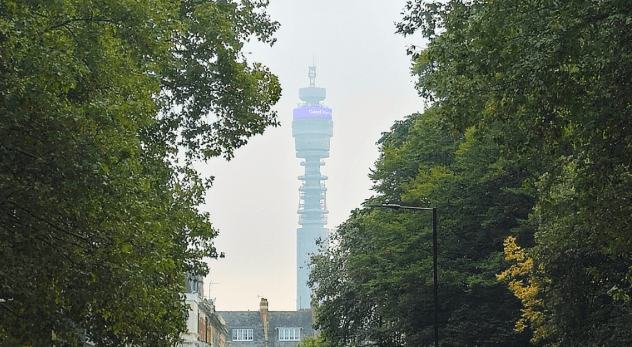Gas boilers air pollution has now overtaken road traffic as the leading cause of nitrogen oxides (NOx) emissions in central London, according to a new study conducted by the University of York.
This shift comes as a direct consequence of the significant drop in vehicle emissions following the implementation of the Ultra Low Emission Zone (ULEZ). The reduced traffic-related pollution has made it easier to pinpoint other major contributors to the capital’s air quality issues.
Until recently, emissions from road vehicles were so dominant that they masked the impact of other pollution sources. However, much like a receding tide revealing the seabed beneath, the decline in road-based pollution has laid bare the role of other contributors—chief among them, gas boilers.
Utilising data collected by sensors mounted on the BT Tower between 2021 and 2023, the researchers found that gas boilers—primarily in use within non-domestic and institutional buildings—now account for nearly 75% of the remaining NOx emissions in central London. This part of the city is less residential, and thus industrial and commercial heating systems have a more significant impact.
Despite overall pollution levels falling since ULEZ was launched, this study sheds light on where further action is needed. The team was able to distinguish the pollution sources by analysing the NOx-to-CO2 ratio, which varies distinctly between traffic emissions and boiler outputs.
The findings were published in the journal Environmental Science & Technology, with the study led by Professor James Lee, Professor of Atmospheric Chemistry at the University of York.
“Our research highlights how much NOx emissions from transport have improved, but also the task still ahead in getting combustion out of cities. Whilst talk of switching from gas to heat pumps is mainly framed around the decarbonisation benefits, it would be a major gain for air quality too.”
Although more efficient, lower-emission boilers are available, the researchers argue that a widespread transition to heat pumps offers a more sustainable and impactful solution for air quality improvement.
The report particularly stresses the air quality advantages of moving away from gas combustion in favour of cleaner alternatives. Heat pumps, which are increasingly promoted for their carbon-reduction potential, could also substantially reduce urban air pollution—if adopted on a broader scale.
Nevertheless, Professor Lee acknowledges that high installation costs remain a barrier to widespread adoption. Yet, the long-term environmental and public health benefits may justify the investment.
Key Points:
- Gas boilers are now the leading source of NOx pollution in central London.
- Road vehicle emissions have dropped significantly due to ULEZ.
- The study used NOx-to-CO2 ratios from BT Tower sensors to trace pollution sources.
- Institutional and industrial boilers are the main culprits.
- Transitioning to heat pumps could improve both air quality and carbon emissions.






